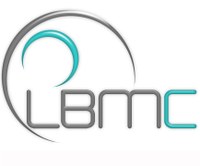qPCR on StepOnePlus (Applied Biosystems)
Using :
*Kit : FastStart Universal SYBER Green Master (Rox)
(Roche, ref : 4913850, 200 reactions of 50uL = 500 reactions of 20uL)
*Plates : qPCR 96-well plate sub-skirted, low profile, frosted (ABI FAST systems), 5X5 plates (ref Eurogenetec : RT-PL96-AF)
*Seals : qPCR optical seals (disposible, adhesive), 25 seals (ref Eurogenetec RT-OPSL-25)
IMPORTANT :
Work on ice
Work with gloves
Keep the kit FastStart SYBER Green Master (Rox) away from light.
Use cellular pipets (except for pipetting PCR products) and filter tips.
Never bring your plate back to the lab after the PCR run.
STEP 1 : Preparation of the standard curve / Validation of the primers
Take one cDNA of your choice and make PCR with the primers you want to test.
After the PCR make dilutions (one per gene):
10uL PCR + 90uL H2O = dil 10-1
50uL dil 10-1 + 450uL H2O = dil 10-2
100uL dil 10-2 + 900uL H2O = dil 10-3
100uL dil 10-3 + 900uL H2O = dil 10-4
100uL dil 10-4 + 900uL H2O = dil 10-5
100uL dil 10-5 + 900uL H2O = dil 10-6
100uL dil 10-6 + 900uL H2O = dil 10-7
100uL dil 10-7 + 900uL H2O = dil 10-8
100uL dil 10-8 + 900uL H2O = dil 10-9
100uL dil 10-9 + 900uL H2O = dil 10-10
100uL dil 10-10 + 900uL H2O = dil 10-11
100uL dil 10-11 + 900uL H2O = dil 10-12
qPCR MIX:
PCR on cDNA : 5uL
FastStart Universal SYBER Green Master (Rox) 2X: 10uL
Primers mix (10mM each) : 0,4uL
H2O (qsp 20uL) : 4,6uL
Do not vortex !
Do not forget to do controls with H2O (2X)
Pipet 15uL of the mix on each well and then add 5uL of cDNA (dil 10-3 to 10-12).
Keep on ice and away from light
CYCLING PROGRAM : (*…* : during this steps make an acquisition)
95°C for 5 minutes
40 times {
95°C for 15 seconds
*60°C *for 40 seconds
}
95°C for 15 seconds
60°C for 1 minute
*95°C* +0,7°C/s
95°C for 15 seconds
At the end of the reaction make the analysis :
make the standard curve, exclude the non linear points and calculate the efficiency of each pair of primers. (must be between 1,85 and 2,00)
For each pair of primers take one dilution (with a CT around 20) and make aliquots of 15uL in PCR tubes and keep them at -20°C.
STEP 2 : Run of samples
Using cDNA (obtained from RT PCR on RNA)
IMPORTANT : There is a inhibitor of the qPCR in the RT mix.
It is necessary to make a dilution of the cDNA (10uL cDNA + 90uL H2O).
qPCR MIX:
cDNA (dil 1/10): 5uL
FastStart Universal SYBER Green Master (Rox) 2X: 10uL
Primers mix (10mM each) : 0,4uL
H2O (qsp 20uL) : 4,6uL
Do not vortex
Do not forget to take a negative control H2O and one Standard for each gene tested (frozen from step 1)
Pipet 15uL of the mix on each well and then add 5uL of cDNA.
Keep on ice and away from light
StepOnePlus procedure to run an experiment :
Start the StepOnePlus and the computer (no password).
Open the software StepOnePlus (it can take few minutes)
On HOME / SET UP / ADVANCAD SET UP
On the left : SET UP
*EXPERIMENT PROPERTIES :
-Complete « Experiment name » with the date and without space.
-Select « StepOnePlus Instrument (96 wells) »
-Select « Quantification-Relative Standard Curve »
-Select « SYBR Green Reagents »
-Select « Fast (around 40 min to complete a run) »
*PLATE SETUP :
*Define targets and samples:
-Add new targets
choose a name and a color, Reporter=SYBR, Quencher=none
-Add new samples
choose a name and a color
*Assign targets and samples: (by selecting wells on the view plate layout)
For samples : U (unknown), for standards : S, for H2O : N (negative control)
*Select the dye to use as a passive reference : ROX
*Define and setup standard (if needed) :
-Select a target.
-Complete the number of points, number of replicates, the starting quantity and the serial factor.
-Click on « Let me select wells » and select them on the plate.
-Apply / Close.
*RUN METHOD :
-Open Run Method , choose (and do NOT modify): hbottin_to use
IMPORTANT : Verify all steps of the programme (temperature, duration, acquisition point)
Do not modify the annealing and elongation temperature (60°C), above 58°C a decontamination enzyme (hydrolase) is active.
CYCLING PROGRAM :
95°C for 5 minutes *…* : during this steps make an acquisition
40 times {
95°C for 15 seconds
*60°C *for 40 seconds
}
95°C for 15 seconds
60°C for 1 minute
*95°C* +0,7°C/s
95°C for 15 seconds
*RUN :
-Put the plate in the machine
-« Start run »
-Save (My computer /OS(C :) /Utilisateurs/Yvert/YourName/AnalysesYYYY-MM-DD)
*ANALYSIS :
-Multicomponent plot :
Verify that the quantity of ROX is equal for all the samples and around 50000 (good indicator of the quality of the kit)
-Melting Curve :
Gene by gene, select all the wells and verify that there is only one single pick.
-Amplification plot :
Gene by gene, select all the wells and verify the position of the CT Threshold.
Be careful the software put it anywhere automatically…Deselect « automatic » and move the threshold line (It is possible to indicate directly a value).
*EXPORT RESULTS : (on the top)
-Export / Export
-Export properties : Select all (5), export in separates files and in .txt
-Choose the export file location / Browse (My computer / OS(C :) /Utilisateurs /Yvert/ Your Name/AnalysesYYYY-MM-DD
-Copy the folder on a USB key to do further analysis on your computer.
DATA ANALYSIS
You can then use these scripts to analyse the data using R.
Dernière mise à jour : ( 18-02-2011 )


 Français
Français  English (UK)
English (UK) 